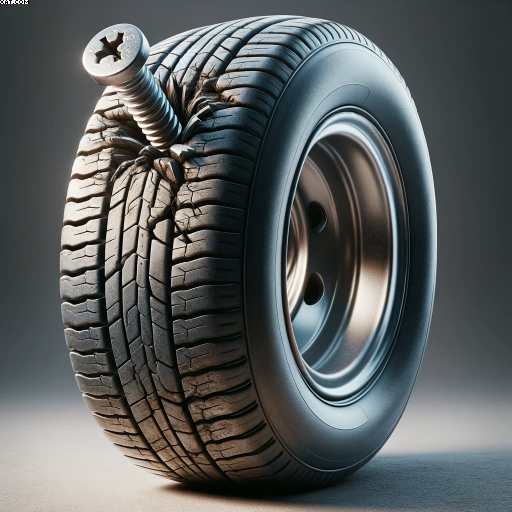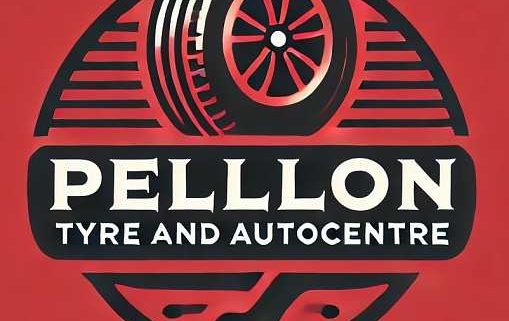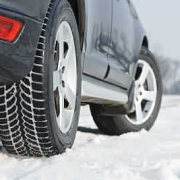Dangers of a £5 Tyre Repair
Table of Contents
Dangers of a 5 Pound Tyre Repair

Dangers of a 5 Pound Tyre Repair
Dangers of a 5 Pound Tyre Repair – What UK Drivers Need to Know
I’ve been in the tyre industry for almost fifty years, and I’ve seen plenty of trends come and go — from the days of remoulds and retreads to today’s run-flats and high-performance tyres. But something that’s really concerning me at the moment is the growing number of cheap, so-called puncture repairs appearing across the country.
Lately, I’ve noticed more back-street part-worn sellers and budget outfits offering tyre “repairs” for as little as £5. Some of them are using rubberised string plugs and other methods that I have spotted on YouTube recently – the same type we used decades ago before the BS AU 159 repair standard came in. Others are squirting in some kind of liquid sealant and sending drivers on their way.
I’d love to hear from other independent tyre dealers across the UK—are you seeing the same thing in your area?
Are part-worn sellers offering these £5 “fixes” near you too?
If this is becoming common nationwide, then it’s something the NTDA, TyreSafe, and the wider tyre industry really need to take a closer look at.
If the AA and RAC Don’t Do It, Why Should Anyone Else?
As a professional who’s been in the tyre trade for nearly fifty years, I find it worrying that even major motoring organisations talk about doing “temporary repairs” just to get drivers home.
Surely a law is a law.
The British Standard BS AU 159g clearly defines what a legal tyre repair is—and these temporary roadside patches simply don’t meet it.
If any of us independents carried out “temporary” repairs and called them safe, we’d be breaking the law and putting lives at risk. Yet it seems acceptable for breakdown firms to do just that under the label of emergency help.
I’m not questioning their intention—they’re trying to get motorists home—but it’s time someone asked whether these temporary repairs are actually legal or just a convenient shortcut. After all, if the AA and RAC can do it, what’s to stop anyone else from saying the same thing?
What the Law Actually Says: Dangers of a 5 Pound Tyre Repair
Here at Pellon Tyres in Halifax, we only ever carry out tyre repairs in accordance with the law — using proper internal patch-plug (mushroom) repairs that comply with the British Standard BS AU 159g.
This standard clearly lays out how a puncture should be repaired, including:
The tyre must be removed from the rim for a full internal inspection.
Repairs are only permitted in the central ¾ of the tread (the “minor repair area”).
The size of the puncture must not exceed 6 mm for most car tyres.
Only approved patch-plug combination repairs are acceptable.
Sidewall and shoulder damage cannot legally be repaired.
These rules are there for a reason — your tyres are the only thing keeping your vehicle safely on the road.
Why a £5 “Repair” Is Never a Proper Repair: Dangers of a 5 Pound Tyre Repair
So what’s wrong with these cheap fixes you see online and in back-street garages?
They don’t meet UK safety standards – External string plugs and sealants are not recognised under BS AU 159g.
The tyre isn’t inspected properly – without removing it from the rim, you can’t see internal cord or belt damage.
Insurance issues – If you’re involved in an accident and it’s found that your tyre had an illegal repair, your insurance may be void.
They can damage TPMS sensors – sealants in particular can ruin the sensors used in modern cars.
Simply put, these £5 quick fixes are not worth the risk — to your safety, your wallet, or your licence.
What a Proper Repair Involves
A legal, permanent repair carried out by a professional garage like Pellon Tyres includes:
Removing the tyre from the wheel.
Checking for internal damage and ensuring the puncture is within the repairable area.
Fitting a proper mushroom-style patch-plug using professional equipment.
Rebalancing the wheel.
Refitting and pressure checking the tyre.
Because of the time taken and expertise of my staff, this costs about £20 (some charge more, some charge less), but you leave knowing your tyre is safe, legal, and roadworthy.
If the damage is outside the safe repair area or the tyre has internal damage, we’ll always explain why it’s better to replace rather than risk it.
Why the Industry Needs to Take Notice: Dangers of a 5 Pound Tyre Repair
The rise of these cheap “repairs” is worrying not just for customers but for the whole tyre trade.
When people see a £5 fix and think that’s normal, it undermines those of us who do the job properly and stick to the rules.
I believe organisations like TyreSafe and the NTDA should take a strong stand on this issue — perhaps launching a national awareness campaign to educate the public about the dangers and illegality of these shortcuts.
As an industry, we’ve worked hard to build trust, improve safety standards, and raise awareness – but this sort of thing threatens to undo that progress.
Final Thoughts
After nearly five decades in the tyre business, I can honestly say that safety always comes first.
Cutting corners might save a fiver today, but it could cost someone a lot more tomorrow.
So, if you get a puncture, don’t be tempted by a £5 “quick fix”.
Come to a professional garage that follows the legal BS AU 159g standard — like we do here at Pellon Tyres in Halifax.
It’s the safest, smartest, and most responsible choice.
Disclaimer:
The views expressed in this article are based on my personal experience and understanding of current UK tyre repair standards. While every effort has been made to ensure accuracy, any errors or omissions are unintentional. Readers should always refer to the official BS AU 159g standard and guidance from recognised bodies such as TyreSafe, the NTDA, or the British Tyre Manufacturers’ Association (BTMA) for the most up-to-date information.



